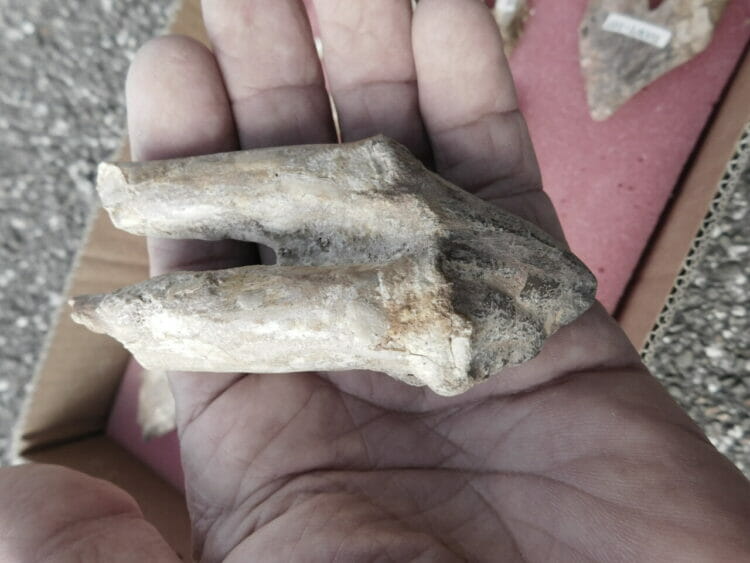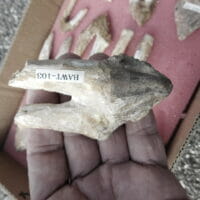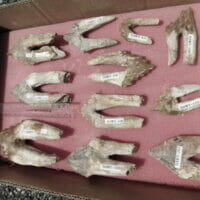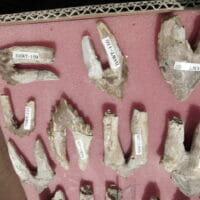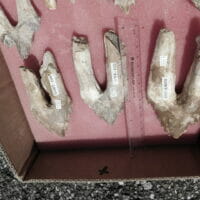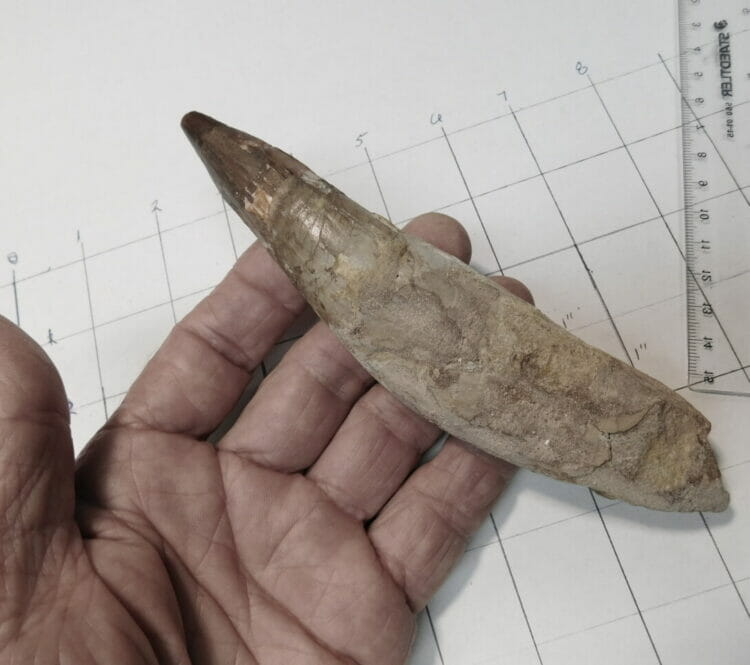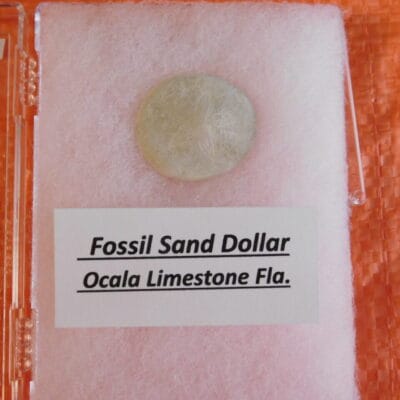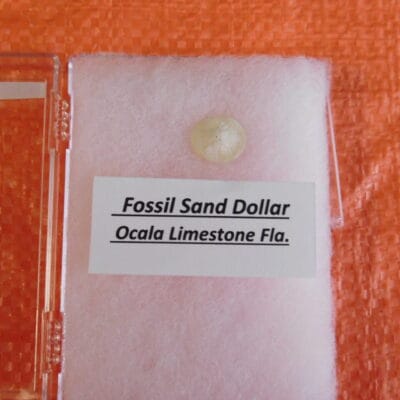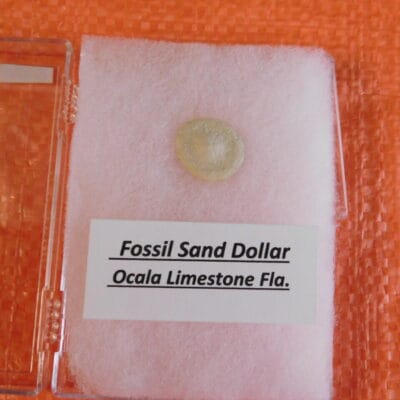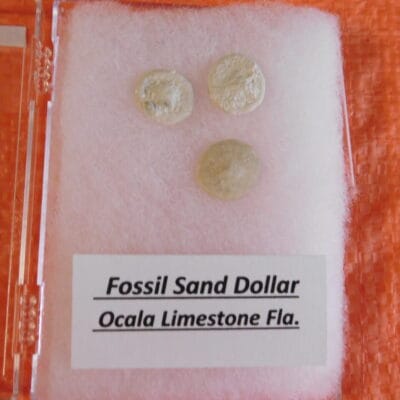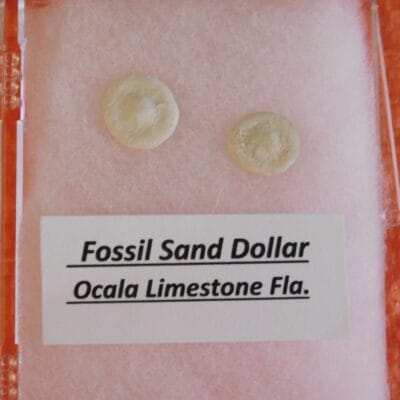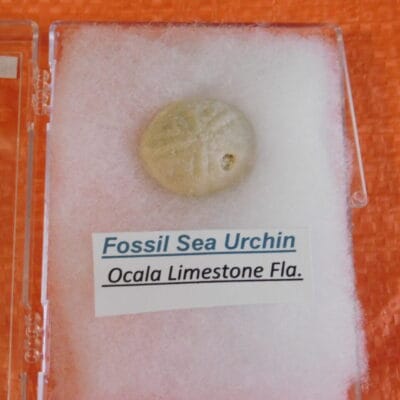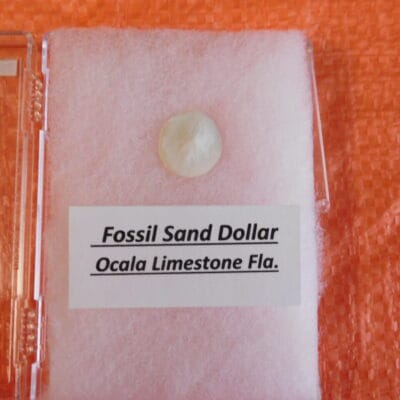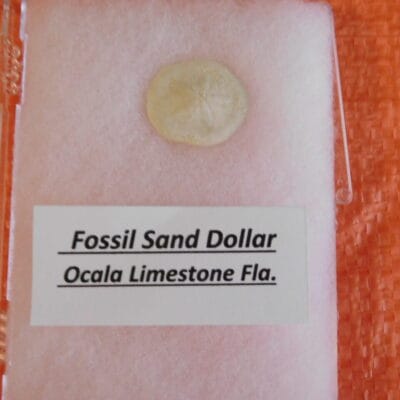Description
Giant Fossil Whale Jaw over 20″ long and 6″ High Seven Teeth And jaw bone Basilosaurus (meaning “king lizard”) is a genus of large, predatory, prehistoric archaeocete whale from the late Eocene, approximately 41.3 to 33.9 million years ago (mya). First described in 1834, it was the first archaeocete and prehistoric whale known to science.[2] The first fossils were discovered along the Gulf Coast of the United States, along with a few fossils in the eastern U.S., attributed to the type species B. cetoides. They were originally thought to be of a giant reptile, hence the suffix “-saurus”, Ancient Greek for “lizard”. The animal Basilosaurus
was later found to be an early marine mammal, which prompted attempts at renaming the creature, which failed as zoological nomenclature dictates using the original name given. Fossils were later found of the second species, B. isis, in 1904 in North Africa, more specifically the countries of Egypt, Jordan, Tunisia[3] and Morocco. Basilosaurus has a possible record in Seymour Island in Antarctica.[4][unreliable source?]
Basilosaurus is considered to have been common in the Tethys sea.[5][6] It was one of the largest, if not the largest, animals of the Paleogene. It was the top predator of its environment, preying on sharks, large fish and other marine mammals, namely the dolphin-like Dorudon, which seems to have been their predominant food source.
Basilosaurus was at one point a wastebasket taxon, before the genus slowly started getting reevaluated, with many species of different Eocene cetacean being assigned to the genus in the past, however they are invalid or have been reclassified under a new or different genus, leaving only 2 confirmed species. Basilosaurus may have been one of the first fully aquatic cetaceans[2] (sometimes referred to as the pelagiceti[7]). Basilosaurus, unlike modern cetaceans, had various types of teeth–such as canines and molars–in its mouth (heterodonty), and it probably was able to chew its food in contrast to modern cetaceans which swallow their food whole
Measuring 15–20 m (49–66 ft),[10][11][12][13] Basilosaurus is one of the largest-known animals to exist from K–Pg extinction event 66 million years ago (mya) to around 15 million years ago when modern cetaceans began to reach enormous sizes.[14] B. isis is slightly smaller than B. cetoides,[15] with B. isis being 15–18 m (49–59 ft) long and B. cetoides being 17–20 m (56–66 ft) long.[12][13] Basilosaurus is distinguished from other basilosaurids genera by its larger body size and its more elongated posterior thoracic, lumbar, and anterior caudal vertebrae. Basilosaurus does not have the vertically oriented metapophyses seen in its closest relative the basilosaurid known as Basiloterus. Basilosaurus is considered to be the largest of archeocete whales.[16][17]
Cranium[edit]

